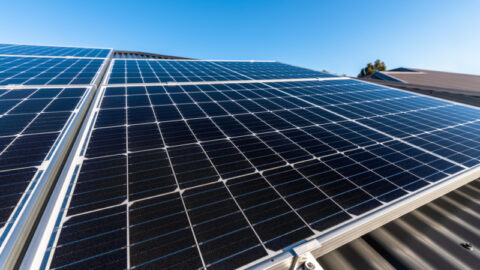The Clean Energy Council has released a new report, outlining numerous recommendations to fix the skills and labour challenges that could impact the success of Australia’s clean energy transition.
The Skilling the Energy Transition report has warned that Australia runs the risk of being unable to meet its new climate targets unless the current and growing labour shortages and skills gaps across the energy industry are filled.
As the Federal Government meets with key stakeholders to discuss issues around employment, fair wages and business growth at this week’s National Jobs and Skills Summit, the Clean Energy Council has called for it to urgently meet the report’s six key recommendations.
The recommendations are:
- Calibrate higher education to meet clean energy industries’ interests
- Anticipate clean energy workforce needs
- Raise the profile of working in clean energy as an opportunity for all Australians
- Establish a Transition Authority
- Enhance the Vocational Education and Training Sector’s capacity to understand and meet the demands of industry
- Raise the international profile of Australia and support the increased transfer of international skills and capacity, so Australia becomes a global centre of clean energy expertise
Clean Energy Council Chief Executive, Kane Thornton, said, “This is the key decade, not only for Australia’s emissions reduction efforts but also in developing the workforce to drive this economy-wide change.
“Now is the time to take stock and put in place measures to ensure that people and jobs are a focus of Australia’s clean energy transition.”
The Australian Energy Market Operator’s (AEMO) 2022 Integrated System Plan outlines the case for building 141GW of large-scale wind and solar capacity, 63GW of storage and hydro capacity, and 69GW of small-scale solar and household batteries.
These renewable energy sources are needed by 2050 to maintain reliability and keep prices down. This represents a ninefold increase in large-scale renewable generation installed in the National Electricity Market and a fivefold increase in small-scale generation.
“Delivering this transformation will require an enormous number of workers. According to Reputex’s modelling of the ALP’s Powering Australia policy platform, there could be 604,000 additional direct and indirect jobs created by 2030. This presents an enormous opportunity but comes at a time where the existing modest workforce of 30,000 is riddled with challenges, gaps, and unmet demand from industry,” Mr Thornton said.
By 2035, 75 per cent of clean energy jobs could be in regional Australia with the right policy settings. Clean energy is truly an opportunity for all Australians and can be transformative for our regional economies.
Acting National Secretary of the Electrical Trades Union, Michael Wright, said, “The critical and urgent need to power Australia’s future means that prioritising the skills and training of energy workers and tomorrow’s trades is vital for the national interest.
“From the pylon to the power point, the turbine to the cook top: Australia’s energy future creates an unprecedented demand for a high-skilled workforce.
“This report shows that investing in a secure, skilled and well-trained workforce is the first step towards powering Australia’s future. It’s the absolute foundation of the pathway to meet climate targets and reduce emissions.”
The Clean Energy Council highlighted that while Aboriginal and Torres Strait Islander Australians make up over three per cent of the population, they comprise just 0.8 per cent of the current clean energy workforce.
“The clean energy industry wants to put its best foot forward through genuine collaboration with First Nations communities, which means sharing the benefits of clean energy through sustainable and equitable practice and protecting an ancient culture,” the Clean Energy Council said.
“While female representation (39 per cent) in the clean energy sector is ahead of that in oil and gas (23 per cent) and coal (16 per cent), they are overrepresented in administration roles (over 60 per cent) and under-represented in senior management roles (32 per cent) and at board level (19 per cent).”
Mr Thornton said, “Addressing current and growing labour shortages and skills gaps requires a genuine collaboration between governments, community, agencies and development bodies, the education sector, and the clean energy industry.
“We don’t have time to waste. Opportunity comes knocking once in a generation. This is our generation’s opportunity to deliver a clean energy future for Australia, set us up to become a global clean energy superpower, creating an extraordinary legacy for Australian workers.”
Engineers Australia Chief Executive Officer, Romilly Madew, said the skills shortage must be addressed quickly to keep pace with Australia’s planned transition to net zero.
“The enormity of the task of transitioning to a clean energy economy and society is beyond the capacity of Australia’s current workforce,” Ms Madew said.
“As part of this skills shortage, the nation urgently needs more engineers working across the whole economy to support the significant challenges and opportunities associated with reaching net-zero emissions and moving towards a clean energy power system.
“Engineers Australia endorses the call for government, industry, the tertiary education sector, and professional associations to work together to drive this enormous transition and transformation challenge.”
The full report can be found at: cleanenergycouncil.org.au/skillingtheenergytransition
















